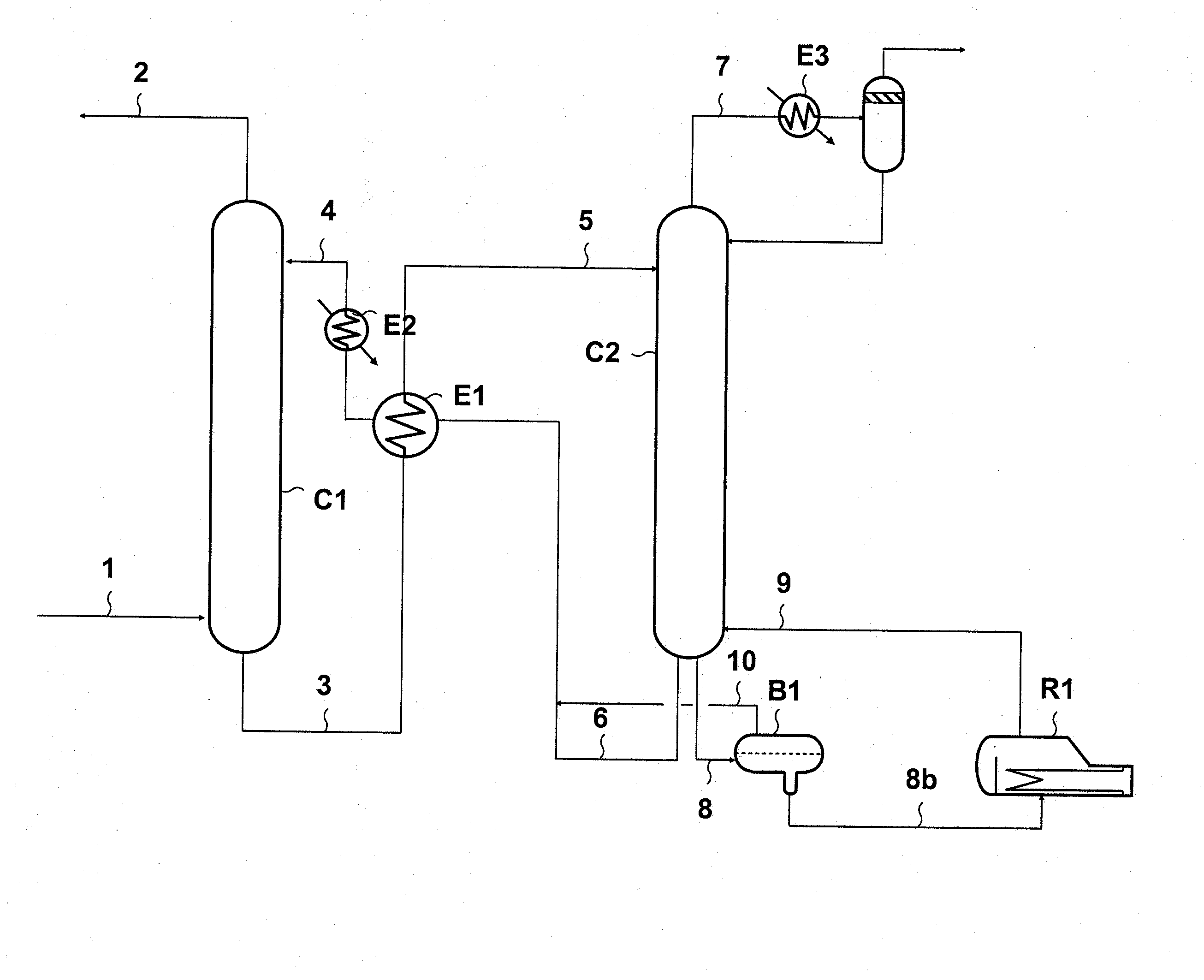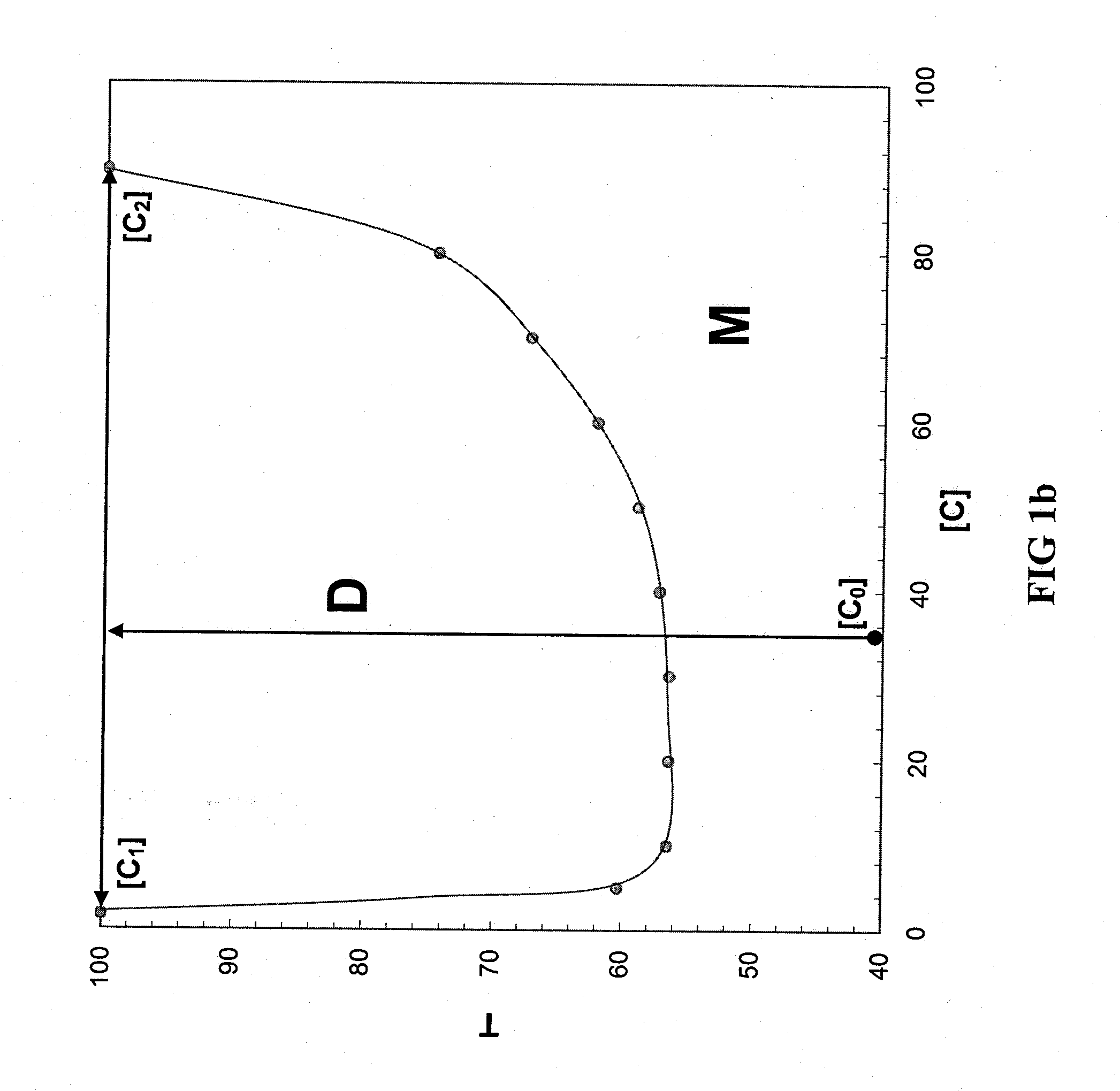Gas deacidizing method using an absorbent solution with vaporization and/or purification of a fraction of the regenerated absorbent solution
a technology of absorbent solution and gaseous effluent, which is applied in the preparation of gaseous fuels, hydrogen sulfides, urea derivatives, etc., can solve the problems of liquid-liquid separation problems, oxygen presence can generate other degradation reactions, foaming problems, etc., to reduce the amount of solution, and reduce the effect of oxygen
- Summary
- Abstract
- Description
- Claims
- Application Information
AI Technical Summary
Benefits of technology
Problems solved by technology
Method used
Image
Examples
Embodiment Construction
[0032]With reference to FIG. 1, the gaseous effluent to be deacidized circulating in line 1 is contacted in absorption column C1 with the absorbent solution flowing in through line 4. Column C1 is equipped with gas / liquid contacting internals, for example distillation trays, a random or a stacked packing.
[0033]The deacidizing method according to the invention can be applied to various gaseous effluents. For example, the method allows to decarbonate combustion fumes, to deacidize natural gas or a Claus tail gas. The method also allows to remove the acid compounds contained in synthesis gas, in conversion gas in integrated coal or natural gas combustion plants, and in the gas resulting from biomass fermentation.
[0034]In column C1, the reactive compounds of the absorbent solution react with the acid compounds so as to form a salt soluble in the solution. The gas depleted in acid compounds is discharged from C1 through line 2. The absorbent solution enriched in acid compounds, in form o...
PUM
| Property | Measurement | Unit |
|---|---|---|
| temperature | aaaaa | aaaaa |
| temperature | aaaaa | aaaaa |
| wt. % | aaaaa | aaaaa |
Abstract
Description
Claims
Application Information
 Login to View More
Login to View More - R&D
- Intellectual Property
- Life Sciences
- Materials
- Tech Scout
- Unparalleled Data Quality
- Higher Quality Content
- 60% Fewer Hallucinations
Browse by: Latest US Patents, China's latest patents, Technical Efficacy Thesaurus, Application Domain, Technology Topic, Popular Technical Reports.
© 2025 PatSnap. All rights reserved.Legal|Privacy policy|Modern Slavery Act Transparency Statement|Sitemap|About US| Contact US: help@patsnap.com



